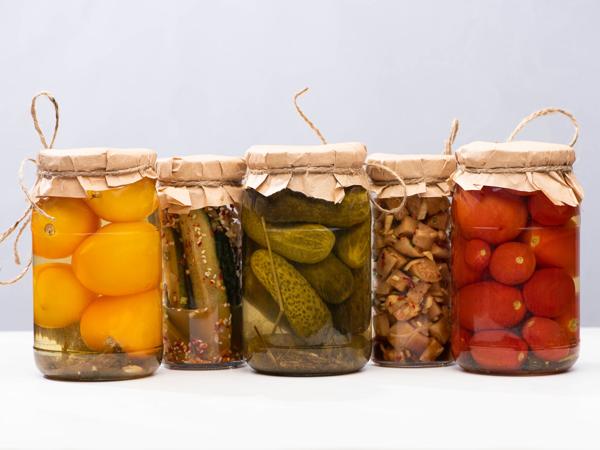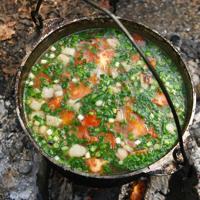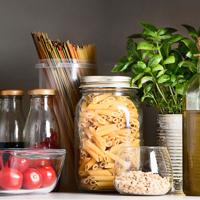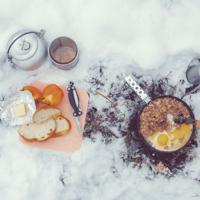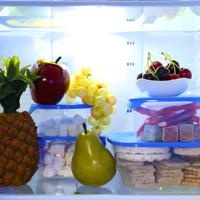In times of uncertainty, being prepared can provide peace of mind. One way to ensure your preparedness is to learn how to preserve food yourself. This skill isn't just for emergencies—it can also reduce waste and stretch your food budget. Here, I'll share various DIY food preservation methods, embracing both time-honored techniques and modern methods. Remember, these are starting points for your food preservation journey. Always do your own research and seek out additional resources.
1. Dehydration
Dehydration involves removing the moisture from food, which prevents the growth of bacteria and mold. It's one of the oldest preservation methods and can be done using several techniques.
Air Drying: This method involves hanging food, like herbs and peppers, in a warm, dry, and well-ventilated space. It can take several days to weeks.
Sun Drying: Suitable for fruits like tomatoes and apricots in arid climates. Place food on racks in direct sunlight and cover with a net to keep away pests.
Using a Dehydrator: More efficient and consistent than air or sun drying. Adjustable settings allow for controlled drying times and temperatures.
Example: Dehydrating Apples
- Preparation: Wash, core, and slice apples evenly.
- Drying: Arrange slices on a dehydrator tray, leaving space between each slice. Follow your dehydrator’s instructions for time and temperature.
- Storage: Once dried, store apple slices in airtight containers in a cool, dark place. Use within six months for best quality.
2. Canning
Canning preserves food by sterilizing it and sealing it in an airtight container. There are two popular methods: water bath canning and pressure canning.
Water Bath Canning: Suitable for high-acid foods like fruits, pickles, and tomatoes. Involves immersing jars in boiling water for a prescribed time.
Pressure Canning: Necessary for low-acid foods like meats, vegetables, and soups. Uses a pressure canner to reach higher temperatures, ensuring all bacteria are killed.
Example: Canning Tomatoes
- Preparation: Wash and peel tomatoes. Place them in hot, sterilized jars.
- Processing: Add lemon juice for acidity. Process jars in a water bath canner for 35-45 minutes.
- Storage: Store in a cool, dark space. Jars may last for up to a year.
3. Fermentation
Fermentation is a unique method that not only preserves food but can also increase its nutritional value. It relies on beneficial bacteria, which convert sugars into acids or alcohol.
- Types of Ferments: Includes sauerkraut, kimchi, yogurt, and kombucha.
- Considerations: Cleanliness is crucial. Use non-reactive containers and utensils to avoid unwanted bacterial growth.
Example: Making Sauerkraut
- Ingredients: Cabbage and salt.
- Process: Finely shred cabbage, mix with salt, and pack tightly into a jar. Ensure cabbage is submerged in its juices to prevent spoilage.
- Fermentation: Cover loosely and leave at room temperature for 1-2 weeks, then move to cold storage.
4. Freezing
Freezing is straightforward and retains most of the nutritional value of food. While not suitable for very long-term storage, it's very effective for many months.
- Tips: Blanch vegetables before freezing to retain texture and color. Use freezer-safe bags or containers, and remove as much air as possible.
- Challenges: Freezers can fail, so it's wise to have backup preservation methods.
Example: Freezing Berries
- Preparation: Wash, dry, and spread berries on a baking sheet. Freeze until solid to prevent clumping.
- Storage: Transfer to a freezer bag, removing as much air as possible. Use within a year for best flavor.
5. Pickling
Pickling involves preserving food in an acidic solution, usually vinegar brine, which makes food inhospitable to spoilage-causing bacteria.
- Quick Pickles: Also known as refrigerator pickles. They don’t undergo fermentation and are kept in the fridge.
- Traditional Pickling: Involves fermenting food, which adds complex flavors.
Example: Quick Pickled Cucumbers
- Ingredients: Cucumbers, vinegar, water, salt, sugar, and spices.
- Process: Combine vinegar, water, salt, and sugar and bring to a boil. Pack cucumbers and spices in jars, pour over the hot brine.
- Storage: Keep in the fridge and use within a couple of months.
Food preservation isn't just about sustainability and self-reliance—it's also about tradition and creativity. While this guide covers basic methods, each technique offers endless possibilities for experimentation and personalization. Appreciate the journey, learn from mistakes, and enjoy the rewards of your preserved foods. For further reading, great resources include National Center for Home Food Preservation and books from respected authors like Sandor Katz on fermentation.
As you try these techniques, remember that safety is paramount. Follow trusted guidelines to ensure that your preserved foods are both safe to eat and delicious.
